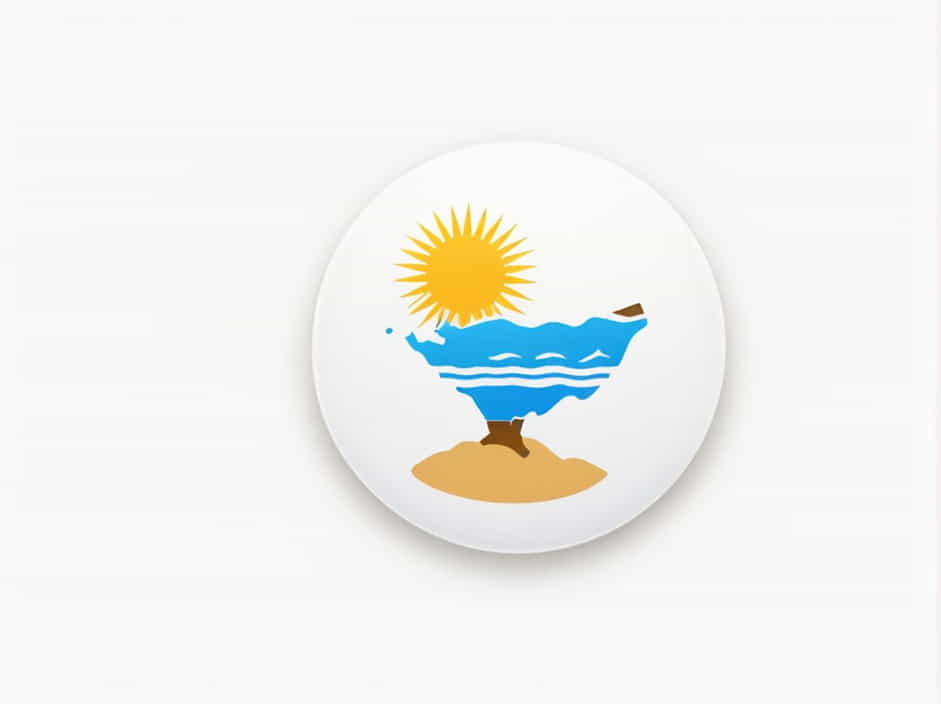Uruguay is a small yet vibrant country in South America, known for its rich culture, beautiful landscapes, and strong economy. However, there is a common misconception that Uruguay is located on the Pacific Seacoast. In reality, Uruguay is on the Atlantic Ocean rather than the Pacific Ocean.
In this topic, we will explore Uruguay’s geographical location, its coastline, major ports, and how it interacts with the Atlantic Ocean, while also clarifying its relation to the Pacific Seacoast.
1. Where is Uruguay Located?
1.1 South America’s Geography
Uruguay is located in the southeastern part of South America. It is bordered by:
-
Brazil to the north
-
Argentina to the west
-
The Atlantic Ocean to the south and southeast
Unlike Chile, Peru, and Ecuador, which have coastlines along the Pacific Ocean, Uruguay faces the Atlantic Ocean.
1.2 The Atlantic Coastline of Uruguay
Uruguay has a long coastline along the Atlantic Ocean, stretching for approximately 660 km. This coastline includes popular beaches, major ports, and important economic hubs.
Some of the key coastal cities include:
-
Montevideo – The capital and largest city, located on the Rào de la Plata estuary
-
Punta del Este – A world-famous tourist destination known for its beaches
-
Maldonado – Another important coastal city with scenic ocean views
-
Rocha – Known for its untouched beaches and natural reserves
Since Uruguay faces the Atlantic Ocean, it does not have access to the Pacific Ocean.
2. The Difference Between the Atlantic and Pacific Oceans
2.1 What is the Atlantic Ocean?
The Atlantic Ocean is the second-largest ocean in the world, covering about 20% of Earth’s surface. It separates South America and Africa from North America and Europe.
2.2 What is the Pacific Ocean?
The Pacific Ocean is the world’s largest ocean, covering more than 30% of the Earth’s surface. It stretches from Asia and Australia to the west and North and South America to the east.
2.3 Uruguay’s Relation to the Oceans
-
Since Uruguay’s coastline is along the Atlantic, it is not connected to the Pacific Ocean.
-
The only South American countries with Pacific coastlines are Chile, Peru, Ecuador, and Colombia.
3. Major Coastal Features of Uruguay
3.1 The Rào de la Plata Estuary
Uruguay’s capital, Montevideo, is located on the Rào de la Plata, a massive estuary where the Paranà¡ and Uruguay Rivers meet the Atlantic Ocean. The Rào de la Plata is often considered the gateway to the Atlantic for Uruguay and Argentina.
3.2 Beaches and Tourism
Uruguay’s beaches along the Atlantic Ocean attract millions of tourists each year. Some of the most famous ones include:
-
Punta del Este – A luxury beach resort known as the "Monaco of South America"
-
La Paloma – A small coastal town with beautiful white-sand beaches
-
Pirià¡polis – A historic beach town offering a mix of hills and ocean views
3.3 Ports and Maritime Economy
Uruguay’s economy depends on its ports, which facilitate trade and transportation. The major ports include:
-
Port of Montevideo – One of the largest and most important ports in South America
-
Port of Nueva Palmira – A key port for agricultural exports
-
Port of La Paloma – Used for fishing and small-scale trade
4. Why Do Some People Think Uruguay is on the Pacific Seacoast?
4.1 Confusion with Other South American Countries
-
Many people assume all South American countries have access to the Pacific Ocean.
-
However, only Chile, Peru, Ecuador, and Colombia have Pacific coastlines.
4.2 Misunderstanding of the Rào de la Plata
-
Some mistakenly think the Rào de la Plata is part of the Pacific Ocean.
-
In reality, it is an Atlantic estuary, not connected to the Pacific.
4.3 General Lack of Geographic Knowledge
- Since Uruguay is not as globally well-known as Brazil or Argentina, some assume it is on the Pacific by mistake.
5. Uruguay’s Connection to the Pacific Ocean
Although Uruguay is not directly on the Pacific, it has economic and trade connections to Pacific countries:
5.1 Trade Through the Panama Canal
Uruguay’s exports can reach the Pacific Ocean via the Panama Canal, a key route connecting the Atlantic and Pacific Oceans.
5.2 Exports to Asia
Uruguay exports goods like beef, soybeans, and wool to China, Japan, and South Korea, which are Pacific-facing nations.
5.3 Maritime Agreements with Pacific Nations
Uruguay has trade agreements with Pacific countries, allowing it to interact economically with the Pacific region.
Uruguay is not on the Pacific Seacoast. Instead, it has a beautiful coastline along the Atlantic Ocean. With its stunning beaches, major ports, and strong maritime trade, Uruguay plays a vital role in South America’s Atlantic economy.
While Uruguay is geographically separated from the Pacific Ocean, it still has economic and trade links with Pacific nations. Understanding Uruguay’s true coastal geography helps clarify misconceptions and highlights the country’s strategic location in South America.
